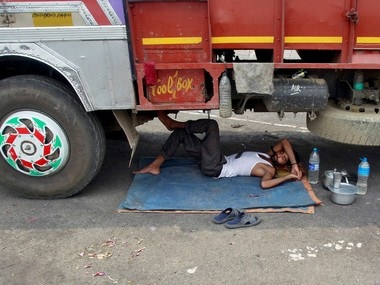If there is one man who must be credited more than anyone else for bringing the goods and services tax (GST) so close to fruition, it must be Finance Minister Arun Jaitley. While the political push to put GST on mission mode was that of the Prime Minister, getting 29 states and assorted Union Territories to sign up on a broad consensus so far is nothing short of a miracle. On Thursday (3 November), the GST Council came up with a consensus on rates, just days after at least two state finance ministers, Thomas Isaac of Kerala, and Amit Mitra of West Bengal, had been muttering cussedly about a trust deficit with the Centre. While Isaac was miffed about the top GST rate being low and the proposal to retain a cess to compensate states for any revenue shortfall, Mitra talked about a trust deficit and pointed out that the Centre had suddenly shown the number of service tax assesses at over three million, thrice as much as what was indicated earlier. States,he implied, were at an information disadvantage. [caption id=“attachment_3088208” align=“alignleft” width=“380”]  A driver sleeps under a parked truck on a hot summer day on the outskirts of Agartala, India, May 12, 2016. Reuters[/caption] But Thursday’s meeting ended with a consensus on rates. This means the breakneck speed at which agreement has been thrashed out so far is being sustained. Theoretically, Jaitley is on course to meet the implementation deadline of 1 April 2017, with the GST related bills scheduled for the budget session set to begin in early February. A GST Council meeting next week may well give us the final template for the tax and its administration. While the speed achieved so far in GST is commendable and unexpected, no one should underestimate the hurdles ahead. First, we are going to have a relatively more complex GST, with effectively a six-rate structure. Seven if you count the zero rate on 50 percent of the items in the Consumer Prices Index. Officially, there is talk of four rates, but the reality is six: 5, 12, 18, and 28, followed by two more effective rates of 40 percent and 65 percent approximately, which will be 28 percent topped up with a cess. The 40 percent demerit rate will apply to aerated drinks, pan masala and luxury cars, while hapless smokers will be hit with the 65 percent rate. There will be two standard rates, 12 percent and 18 percent. Most services will be in these two rates. This rate structure is not surprising, for the price of consensus is always a messier arrangement, since more dissenters have to be mollified. Second, the real fight lies ahead. Now that the rates are finalised, hundreds of different product items must have to be force-fitted into the structure. One would be naïve to presume that this will be easy, for every business will try to ensure that it stays in the lower band. Logically, every product will be put into a rate that is slightly lower than its current effective rate (excise plus state Vat), but this process is by no means automatic, and the lobbying will be intense at the state level, especially if some states are interested in some products. Modi may have reduced corporate lobbying in Delhi, but state level lobbying continues as before. Since GST is a consensus tax involving both states and Centre, fitting products into particular rate bands will involve huge tussles. Third, the biggest scrimmage will be about control and jurisdiction – including joint control of goods taxation above a certain level. That indirect taxation is a source of high corruption is one of India’s worst-kept secrets. Both Centre and states will thus have to deal with a sullen tax officialdom, which will try to retain as many discretionary powers as possible in order to access some amount of illegal gratification. This pressure will be greatest in states, which remain unreformed on graft. The fight over rates will be fought in a group of secretaries from Centre and states which has been handed the task of fitting products to rates. Fourth, let’s not forget the corporates. Though it is India Inc that has been lobbying hard for GST, now that it is at hand, it is seeking more time to adjust. This is because it will have to rejig its entire supply chain based on the new rates, including the inter-state GST that will be legislated. Companies that operate in several states will have to rethink their entire sourcing and distribution operations in order to optimise tax setoffs. Small businesses will have to switch over entirely to electronic filing of tax returns. Their work can really begin only after the rates are clarified. Right now, they will be having kittens worrying what is in store. Fifth, even after the bills are passed and rates agreed, the toughest part remains: implementation. No one should bet that there will be no glitches or heartburn in the initial six months, when both the taxmen and company officials learn to feed the monster called the GST Network with sales invoice data and tax-payment challans. So far Jaitley has done a great job. But he has to keep the powder dry for future battles – which could continue for 18 months even after legislation. In the next four months, neither he nor his officials can count on any day of relaxation. They have their work cut out.
Now that the rates are finalised, hundreds of different product items must have to be force-fitted into the structure. One would be naïve to presume that this will be easy, for every business will try to ensure that it stays in the lower band.
Advertisement
End of Article
Written by R Jagannathan
R Jagannathan is the Editor-in-Chief of Firstpost. see more


)
)
)
)
)
)
)
)
)



